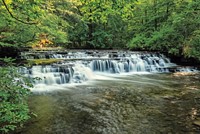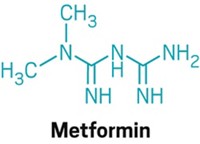Advertisement
Grab your lab coat. Let's get started
Welcome!
Welcome!
Create an account below to get 6 C&EN articles per month, receive newsletters and more - all free.
It seems this is your first time logging in online. Please enter the following information to continue.
As an ACS member you automatically get access to this site. All we need is few more details to create your reading experience.
Not you? Sign in with a different account.
Not you? Sign in with a different account.
ERROR 1
ERROR 1
ERROR 2
ERROR 2
ERROR 2
ERROR 2
ERROR 2
Password and Confirm password must match.
If you have an ACS member number, please enter it here so we can link this account to your membership. (optional)
ERROR 2
ACS values your privacy. By submitting your information, you are gaining access to C&EN and subscribing to our weekly newsletter. We use the information you provide to make your reading experience better, and we will never sell your data to third party members.
Environment
River Sediments Contain Dioxins Linked To Triclosan
Water Pollutants: Triclosan contributed nearly one-third of dioxins recently deposited at a Mississippi River site
by Kellyn Betts
May 21, 2010

Dioxins associated with the widely used antimicrobial called triclosan accounted for nearly one-third of all dioxins deposited in two aquatic sediment cores from 2004 to 2009. That is the conclusion of work by researchers led by William Arnold and Kristopher McNeill, at the University of Minnesota, Twin Cities, who are the first to find triclosan-derived dioxins in the environment. Their findings suggest that the compounds merit scrutiny by toxicologists, the authors and other experts say.
Triclosan is added to a wide variety of consumer products, including soaps, shampoos, deodorants, toothpaste, and toys, according to the Food and Drug Administration. The compound has been used since the 1960s, but regulators at FDA and the Environmental Protection Agency are investigating its potential for causing antibiotic resistance and endocrine disruption.
Scientists routinely detect parts-per-billion concentrations of triclosan in the wastewater entering municipal treatment plants and in their effluent. McNeill, who recently moved to the Swiss Federal Institute of Technology (ETH), Zurich, and Arnold say that their new research suggests that similar concentrations of dioxins exist in water bodies and sediments elsewhere in the U.S. Michael Dodd, an assistant professor in the University of Washington, Seattle, Department of Civil and Environmental Engineering, agrees. The new work "provides a very compelling picture of potentially widespread, unanticipated consequences of triclosan's long-term discharge from North American wastewater treatment facilities," he says.
Scientists have known for years that when triclosan is exposed to chlorine during wastewater treatment, it can form three chlorinated triclosan derivatives that then turn up in wastewater treatment effluent and fish. Arnold and McNeill determined that, like triclosan itself, these chlorinated derivates can convert into dioxins in the presence of sunlight. According to FDA, animal studies have linked long-term dioxin exposure to cancer and suggest that "exposure to low levels of dioxins over long periods... might result in reproductive or developmental effects."
In sediments of the Mississippi River, Arnold, McNeill, and their colleagues found that triclosan-derived dioxins accumulated in a very different pattern than did the dioxins that were produced historically by waste incineration, certain herbicides, and chlorine bleaching of pulp and paper. In the sediment core samples that the researchers collected, the concentrations of historic dioxins either steadily declined or stayed flat since the 1960's and 1970's.
However, the levels of the four triclosan-derived dioxins in the cores rose dramatically over the same period. In recent years, these dioxins accounted for up to 31% of the total mass of dioxins (Environ. Sci. Technol., DOI: 10.1021/es1001105). This increase mirrors triclosan's increasing use in personal care products since 1987, when it was first added to hand soaps, the researchers say.
Little information is available on the toxicity of these triclosan-derived dioxins because most toxicology testing has focused on the dioxins historically documented in the environment.
The new work "highlights the need to understand metabolites, degradates, and other transformation products produced during wastewater treatment and then subsequently released to surface waters," says Bryan Brooks, an associate professor of environmental science at Baylor University. Dodd agrees, adding: "The groups involved in this study have done a tremendous job in piecing together an immensely complicated puzzle."





Join the conversation
Contact the reporter
Submit a Letter to the Editor for publication
Engage with us on Twitter